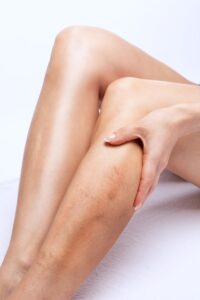Understanding The Types Of Varicose Vein Treatments
Varicose veins are more than just a cosmetic concern; they can cause discomfort and lead to health complications if left untreated. Fortunately, there are several types of treatments available, from conservative methods to advanced surgical options. This article aims to educate patients on the full spectrum of varicose vein treatments, empowering them to make informed decisions about their vein health.
What Are Varicose Veins?
Before exploring the wide range of treatment options, it’s important to understand what varicose veins are. When one-way valves within veins fail, blood flows backward, collecting in the vein and causing it to swell and become visible beneath the skin. The condition is most common in the legs, where veins must work against gravity to return blood to the heart. Factors like genetics, age, pregnancy, and inactivity can contribute to the development of varicose veins. Symptoms may range from mild to severe, including aching, throbbing, and a heavy sensation in the legs. Left untreated, varicose veins can result in skin ulcers and other complications.
Types of Varicose Vein Treatments
Conservative Treatments
The mildest form of treatment aims to alleviate discomfort and prevent varicose veins from worsening. Often the first line of defense, conservative methods require commitment to a new lifestyle.
- Lifestyle Changes: Incorporating regular exercise, maintaining a healthy diet, and elevating the legs when resting can improve blood flow and reduce symptoms.
- Compression Stockings: These specially designed socks create pressure on the leg muscles and veins to help blood return to the heart.
- Exercise: A targeted exercise regimen that strengthens the calf muscles can promote healthy circulation.
Minimally Invasive Treatments
Minimally invasive procedures are performed without the need for general anesthesia and typically have shorter recovery times than surgical options.
- Sclerotherapy: A popular minimally invasive procedure, sclerotherapy involves injecting a solution directly into the vein, which causes the vein to collapse and eventually fade.
- Laser Therapy: Varicose veins can be treated with powerful laser energy that is sent into the vein, making them slowly fade and disappear.
- Radiofrequency Ablation (RFA): This technique uses radiofrequency energy to seal the affected vein shut, redirecting blood flow to healthier veins.
Surgical Treatments
For advanced cases or when minimally invasive treatments have not been successful, surgery may be necessary. While more invasive, these methods are highly effective and can provide long-lasting relief.
- Vein Ligation and Stripping: In this traditional surgery, the vein is tied off and completely removed from the leg.
- Ambulatory Phlebectomy: This outpatient procedure involves the removal of varicose veins through tiny incisions.
- Endoscopic Vein Surgery: Recommended for severe cases, this procedure uses a camera inserted into the leg to close varicose veins.
Emerging and Alternative Treatments
The landscape of varicose vein treatments is constantly evolving, with new technologies and alternative therapies continually being developed.
- Foam Sclerotherapy: A variation of traditional sclerotherapy, a foam solution is used to treat larger varicose veins.
- VenaSeal: A minimally invasive treatment that uses a medical adhesive to close off the affected vein, similar to sclerotherapy.
- Clarivein: A mechanical treatment that combines a rotating wire with sclerosing agents, administered through a catheter inside the vein.
Comparison of Effectiveness and Recovery
Each treatment type has its own set of benefits and drawbacks. Conservative treatments are low risk but may not provide significant relief for advanced cases. Minimally invasive treatments are effective for many patients and offer quicker recovery times than surgery. Surgical interventions are highly effective but come with longer recovery periods and a higher risk of complications.
Discussing these treatments with a vein specialist is vital, as they will be able to recommend the best approach based on the individual’s health, the severity of varicose veins, and personal preferences.
Arizona Varicose Vein Treatments You Can Trust
For those afflicted by varicose veins in Arizona, the Arizona Vein and Laser Institute is dedicated to providing cutting-edge treatment options while prioritizing patient comfort and satisfaction. We offer a range of treatments from cosmetic services to advanced vascular care. Seeking professional advice can lead to a personalized treatment plan that can not only treat varicose veins but also prevent future issues.
For more information or to schedule a consultation, visit the Arizona Vein and Laser Institute website or contact us directly at 602-298-8346. Empower yourself with knowledge about varicose vein treatment and take the first step towards healthier, pain-free legs. Remember, when it comes to your veins, understanding your options can lead to effective and lasting relief.
